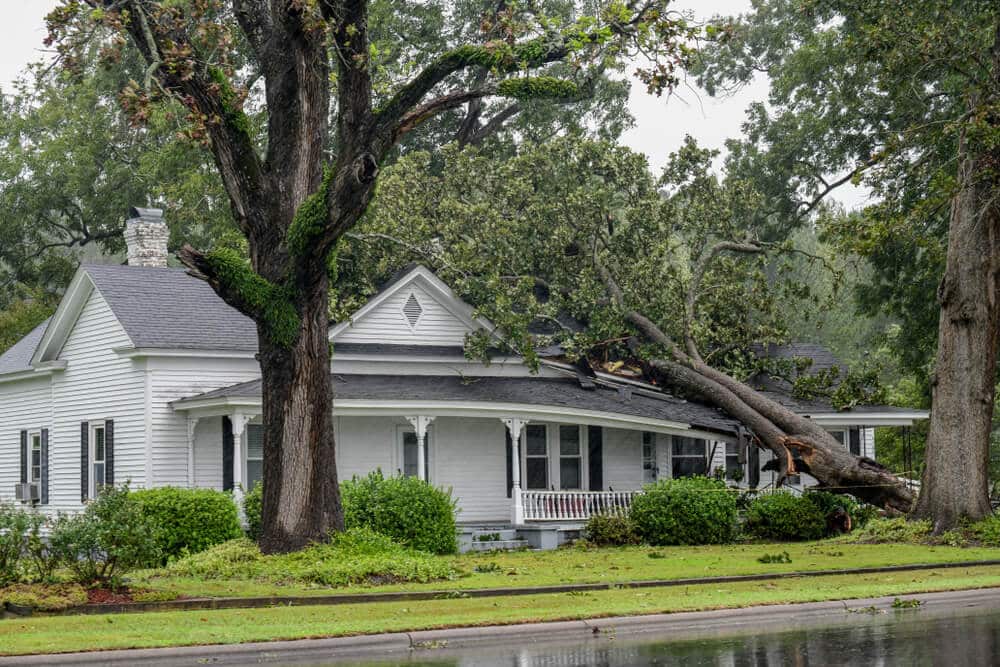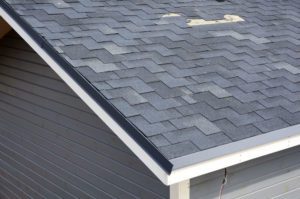
Our first instinct when heavy storms come our way is to take shelter by staying home and inside. But what happens when the storm impacts the very home that serves as your protection?
Here at Perfect Exteriors, we understand what roof storm damage looks like. As a homeowner, you should know the signs of storm damage as well. After strong winds, heavy rain, large hail, or an abundance of snow hit your home, you need to inspect it to ensure that there aren’t any signs of storm damage.
Perfect Exteriors has been serving the Twin Cities area since 2002, and we will help you with whatever roofing and siding repairs you need.
Types of Storm Damage in Minneapolis
Minnesota cities are known for severe weather conditions. From hot and humid summers with plenty of thunderstorms to long, freezing winters and lots of snow – our residents understand extreme conditions and the signs of storm damage for a home.
These conditions can often include hail, strong winds, and lots of precipitation. All of these conditions can cause home and roof storm damage.
Hail Damage
The city of Minneapolis and the surrounding areas are no strangers to hail. Although hail most often falls in small sizes, the occasional severe storm can bring larger, more dangerous pieces of hail that can cause more signs of storm damage.
But even small hail can harm your home. These little balls of ice can fall at high rates, causing damage to your roof, siding, windows, and gutters. Hail can break glass, dent siding, and loosen shingles.
The more hail damage you allow for your home, the more difficult and expensive it will be to repair the signs of storm damage. Hail damage isn’t the kind of storm damage you want to wait to get inspected.
Wind Damage
Even without rain, snow, or hail, strong winds alone can cause wind damage to any Minnesotan home. High-speed winds can tug at the edges of your roof, shifting, loosening, and removing shingles. These same winds can also cause damage to your siding and gutters.
Likewise, robust winds can pick up other objects and launch them at your home. Anything from tree branches to patio furniture can quickly become weaponized, causing exterior wind damage to your siding, roof, windows, and more.
Spotting Storm Damage
We know that storms and severe weather can cause damage to the exterior of our homes, but what should we look for after the storm passes? Here are a few sure signs of storm damage.
Missing Shingles
One of the most obvious signs of storm damage following a significant weather event is missing shingles on your roof. Roof storm damage usually impacts the singles first, since they provide the outer layer of protection on your home.
Storm winds can be strong enough to lift and even remove your shingles. You may also notice loose, shifted, or cracked singles.
The older your roof is, the more likely it is to lose shingles in severe storms with strong winds and rain. Always check your roof for missing shingles after a storm.
Shingle Granule Loss
You may not have lost or loosened any shingles during a significant storm, but your shingles may lose some of their granules, which could be one of the many signs of storm damage. The granules on shingles are what give them their rough texture. This layer is the first line of defense against outdoor elements.
After a hail storm, you may notice some of your shingles have dark spots. These spots indicate granule loss, which could be roof storm damage. While it may not seem like a big deal, granule loss can quickly lead to leaks and water damage if not addressed and repaired.
Bent or Cracked Siding
When we look for signs of storm damage, our minds tend to head straight for the roof. However, the siding on a house can take on some serious hits as well.
Strong winds and hail can crack, dent, and bend your siding, especially if it is of a softer material or is very old. Any signs of storm damage to your siding can leave your home exposed to water damage.
Water Damage
The worst kind of storm damage not only pulls at your shingles and batters your roof, but it can also work its way through the outer layer and cause water damage to your home. Damaged or clogged gutters can also lead to issues with water damage.
You can spot significant water damage by finding water stains on the ceilings of the top floor of your home. It’s also a good idea to check your attic for water spots and active leaks.
Broken Gutters
It is not uncommon for your gutters to get clogged after a heavy storm. Wind and rain can fill your gutters with all kinds of debris one of the many signs of storm damage which can clog up the pipes and disturb the flow of water.
Clogged gutters, though an easy fix, can lead to the build-up of water and eventually cause water damage.
In extreme weather, your gutters may even get bent or broken. Damaged gutters can also prevent the intended flow of water and can cause more issues.
Cracked Windows
One of the most obvious and devastating signs of storm damage to your home is a cracked window. Your windows can crack because of large hail. But heavy winds can also cause debris to crash into your windows. Objects like tree limbs can easily smash through glass.
Be sure to check all the windows in your home after a severe storm, especially one that leaves debris all over your property.
What Now?

Performing a quick self-inspection of your home for signs of storm damage is a great first step following a significant weather event in Minnesota. But sometimes, it is best to get a professional’s opinion on whether your hail damage or wind damage needs simple repairs or a full roof replacement.
After your initial inspection of signs of storm damage, consider calling our professionals at Perfect Exteriors. Our team has over 35 years of combined experience servicing homeowners and their exterior home improvement needs.
Not only do we have the necessary experience, but we also offer free inspections and estimates to get your project started. Contact us today to learn more about our services.


